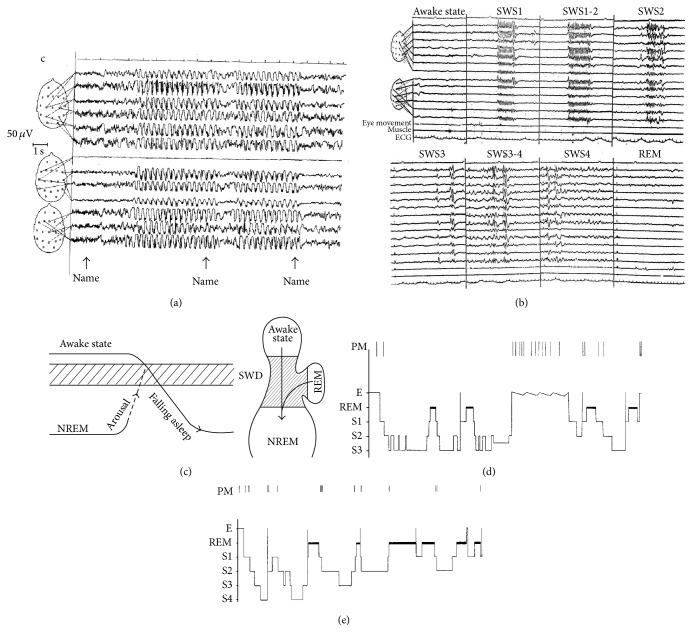Figure 1.
Distribution of generalized spike-wave discharges in different vigilance levels. (a) and (b) In absence epilepsy elevating the vigilance level from NREM sleep by calling the name of the patient first results in transitory activation of the discharges, and later the application of the same stimulus inhibits the discharges. As seen in (c) insert shows the optimal decrease of vigilance level which activates the discharges, while increased arousal and deepening of sleep equally inhibit them. The critical vigilance territory is situated between sleep and wakefulness and NREM and REM, as shown in the left insert. The highest activation have been experienced in shifts from wakefulness to NREM sleep and from REM to NREM sleep (arrows). (b) Shows the typical patterns of spike-wave activation during night sleep. During full wakefulness and REM the spike-wave discharges are absent. During the course of falling asleep (stage 1, superficial stage 2) spike-wave discharges show the ictal absence type activation (even if in awake state they were not present). In deeper sleep (stages 3-4) the typical 3 Hz spike-wave pattern became disrupted; later we see more polyspike-wave forms. (d) and (e) are typical spike-wave activation conditions in absence epilepsy in two patients: in falling asleep, in transitions from wake to NREM or from REM to NREM, around transitory awake state, and before and after awakening in the morning.

